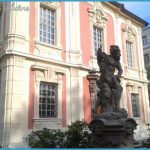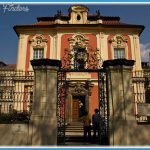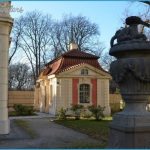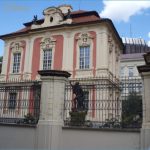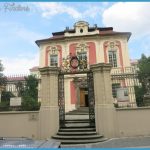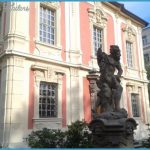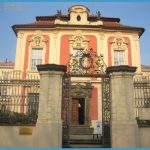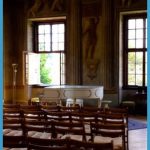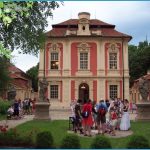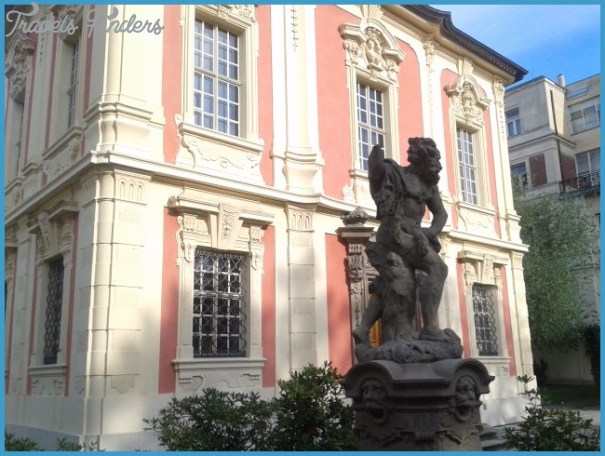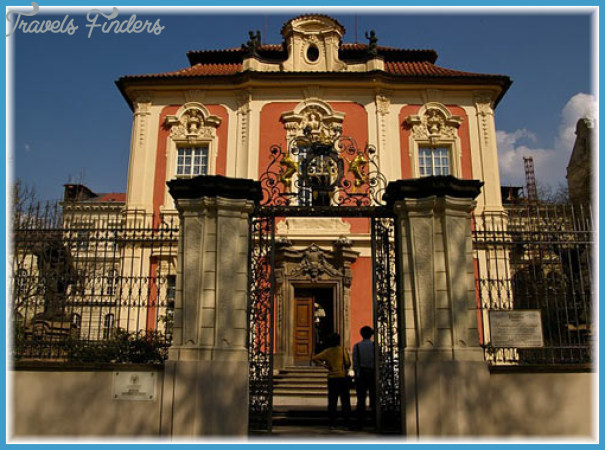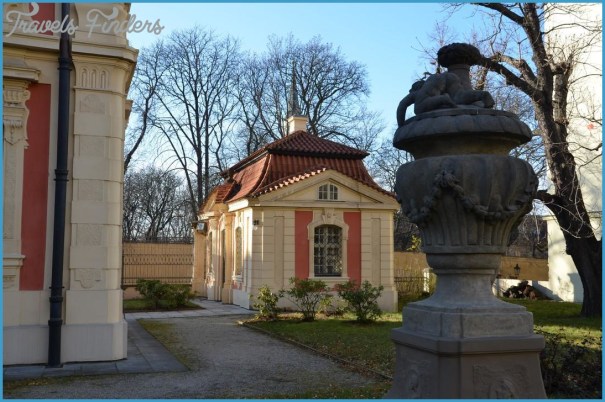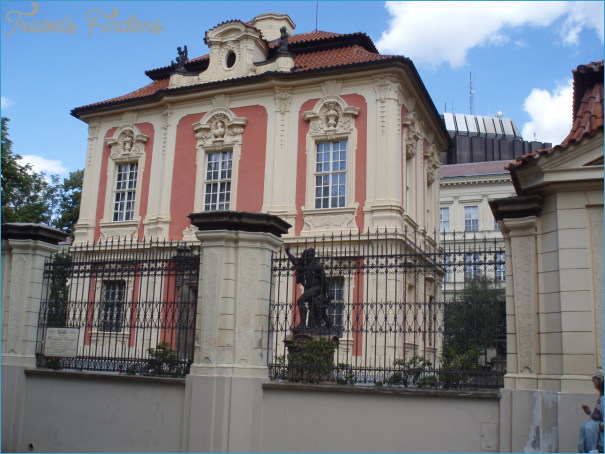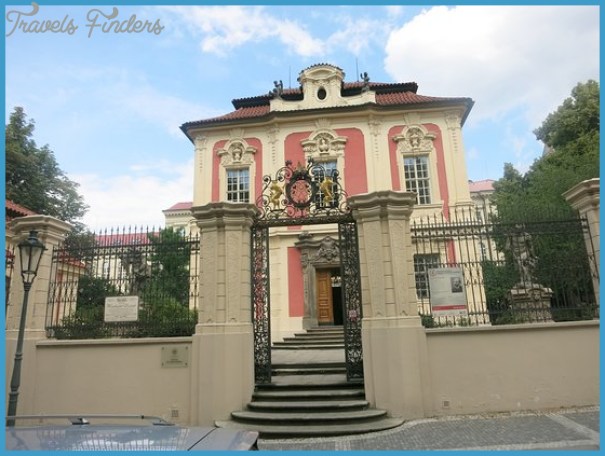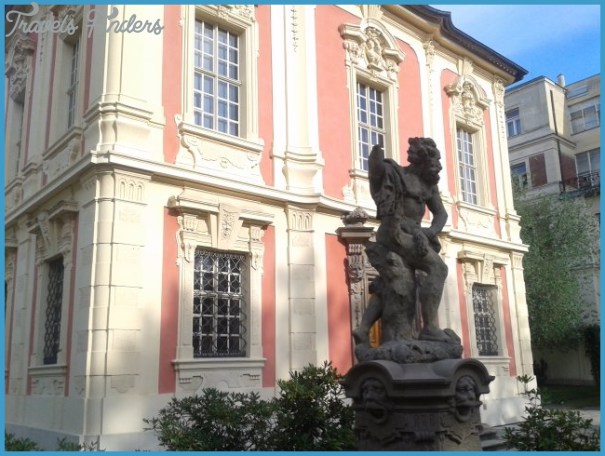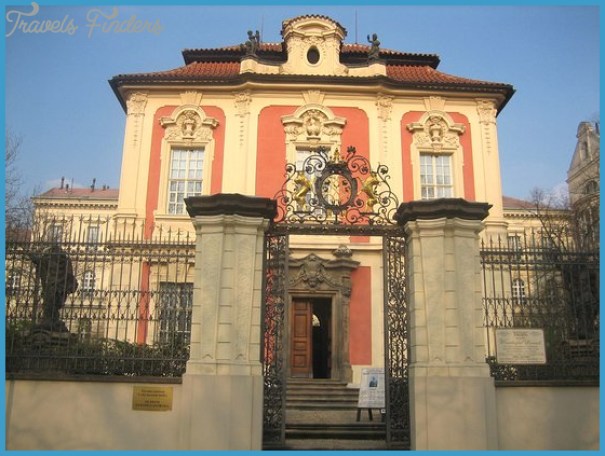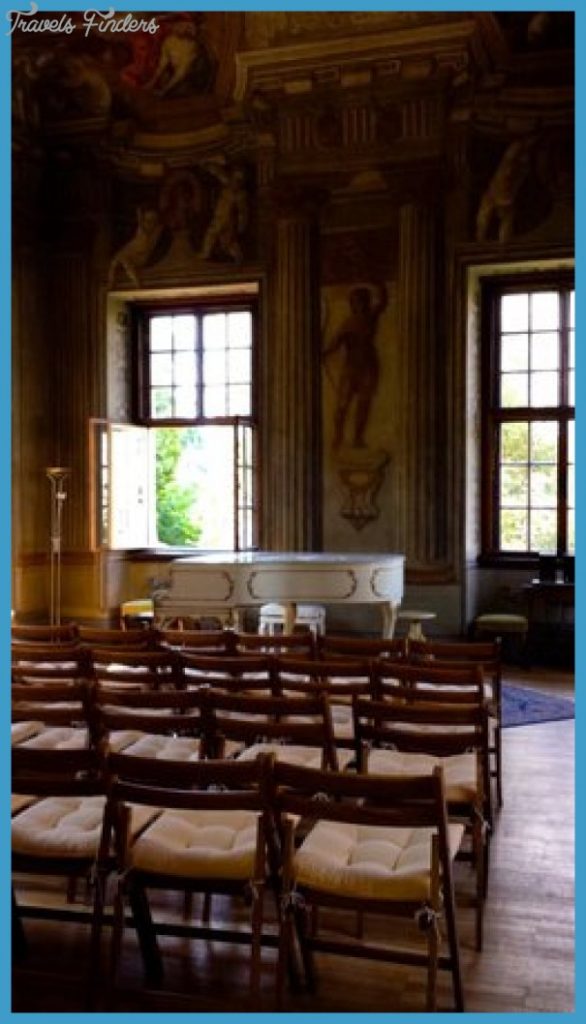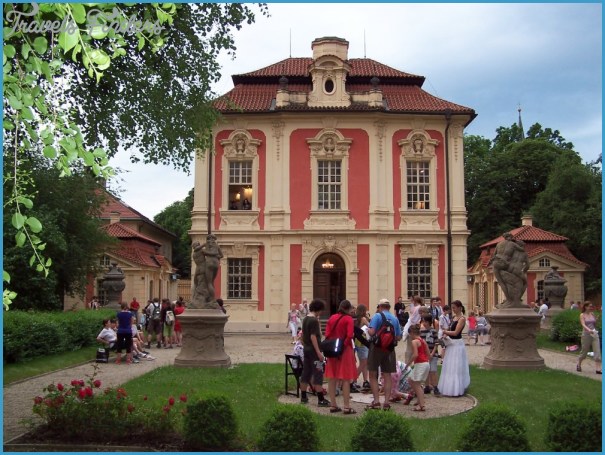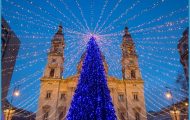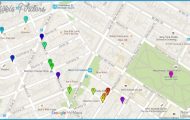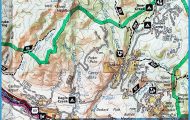DVORAK MUSEUM
Four museums and memorial sites in or close to Prague celebrate the life and music of the Czechs’ most loved composer, Antonin Dvorak. Visitors to Prague music festivals may have already seen the museum at Ke Karlovu 20 in the second district and may even have taken the train 28 km north to his birthplace in Nelahozeves. Fewer are likely to know the museums and places of pilgrimage in Zlonice or Vysoka.
The Prague museum was the first to be opened, in 1932, and it is the most richly endowed with artefacts. Administered by the Museum of Czech Music, it is housed in an 18th-century villa with no prior connection with the composer. The ground floor is devoted to Dvorsak’s life, displaying photographs and documents, articles of clothing (including his Cambridge doctoral robes) and other personal possessions such as his watch and his glasses, musical instruments (in particular his viola and his Bosendorfer grand), honorific urns and wreaths and furniture from his Prague flat. The first floor is a recital room surrounded by displays relating to his music. Attached to the museum is the central archive for the study of Dvorsak, which holds many of his music manuscripts, his correspondence and numerous photographs.
Dvorsak spent most of his life in Prague, arriving when he was 16 to study at the Organ School of the Society for Church Music in Bohemia. He played the viola in the Provisional Theatre orchestra and taught composition at the Prague Conservatory. He met and in 1873 married Anna Cermakova (having initially been in love with her elder sister). The first three of their nine children were born, and died, at their flat at Na rybnicku 14 before the couple moved to Zitna ut 10 (now 14). After the death of his first child he composed the Stabat mater.
During the early 1870s his music began to be more widely known, its accessibility and Slavonic qualities ensuring its warm reception both at home and abroad. Through Brahms he became associated with the German publisher Simrock, but he resisted the temptation to become Germanized, politely declining invitations to move to Vienna from Brahms and from Hanslick, who wrote in 1882 urging him to reconsider: your art requires a wider horizon, a German environment, a bigger, non-Czech public’. The brief time he spent in Vienna is commemorated by a plaque adorning the inn where he stayed, the Goldenes Lamm’ at Wiedner HauptstraSe 7.
DVORAK MUSEUM Photo Gallery
Dvorsak toured widely in Europe, going as far afield as Russia and England, where he conducted new works at the great provincial choir festivals as well as the Albert Hall and Crystal Palace in London. In 1892 he went to America as director of the newly opened National Conservatory in New York, where he lived at 328 East 17th Street. He and his family spent the summers of 1893 and 1894 in the Midwest at the Czech colony at Spillville, Iowa; the house where they stayed (on State Highway 325) is today the home of the American Czechoslovak Music Society.
Dvorak’s birthplace at Nelahozeves
But Dvorak belonged in the Bohemian countryside. He was born on 8 September 1841 at Nelahozeves, a village near Kralupy, just west of the main road northwards from Prague to Roudnice and Dresden, and spent his childhood there in the shadow of the Lobkowitz family castle which dominates the area. His early musical education took place in the public house run by his father Frantisek (a zither player as well as butcher and publican) and in the little parish church, St Andrew’s, across the road, where he was baptized and where later he took organ lessons and sang in the choir; the organ he played is still in use. Later he played the violin in a band with his father and uncle.
His birthplace has been open to the public since 1951 and was restored in 1991 when four rooms, including the presumed room of his birth, were refurbished to mark his 150th birthday. The collection on display includes his bent-wood rocking chair and a bust by Ladislav Saloun as well as family trinkets, portraits, photographs, his prayer book, gifts he acquired on concert tours and his quill pen. On the walls of the recital room, seating 60, there is an informative display about his life and works.
Every year, around 8 September, memorial celebrations are held at Nelahozeves, with Mass at the church and concerts at the house and in the castle on the hill above. Unveiled in 1988, a statue of Dvorak poised to conduct (by Zdenek Hosek, entitled Meditation’) stands in the public garden adjoining the house.
Dvorsak was saved from a career as a butcher by the generosity of his mother’s younger brother, a steward to Count Kinsky, who gave him a home on the Kinsky estates in Zlonice (32 km to the west, near Kladno) and access to tuition from the talented local music master Antonin Liehmann, who lived and worked next door and was later to provide him with a stipend to study in Prague.
At Zlonice the large corner house in which he lived for four years from 1853 has been a local history museum since 1954, with a Dvorak room containing the private collection of the composer’s son Otakar. On display are the bed (disassembled) in which Dvorsak died, souvenirs from Spillville and fragments of the famous bells of Zlonice’ that are enshrined in the title of his first symphony (though their sound is not echoed in the actual music). Other musicians from Zlonice are also commemorated, notably the famous harpist family, the Krumpholzes; and there is a large room, seating 90, used for concerts and lectures.
In 1877 Dvorak’s sister-in-law Josefina – his wife’s sister, and an actress, the one with whom he had earlier been in love -married Count Vaclav Kaunitz at his newly built neo-Renaissance manor house, set in a forest park, with a lake, near the village of Vysoka, near Pribram, The Dvorak museum at Zlonice
70 km south-west of Prague (just off the road from Pribram towards Plzen). The Dvorsaks attended the ceremony and afterwards were frequent visitors.
In 1884 Dvorsak’s increasing fame, and thus fortune, made possible the purchase of a modest property of their own in the village. Villa Rusalka (after the water-sprite: he had yet to write his opera of that title) was their name for their summer retreat, formerly a sheepfold and then a granary, where the composer felt inspired to work. Students from Prague came to attend the master and enjoyed early morning forest walks and the bounty of his garden. Antonin and Anna returned as often as possible and on his deathbed he was still hoping to go there one last time; but he died in Prague on 1 May 1904. Villa Rusalka, still owned by the family and housing some of Dvorsak’s original furniture, is not open to the public. Within sight of the house is a modest memorial acknowledging the composer’s local connection: a gilded plaque is affixed to a large stone, surrounded by smaller irregular stones on which the names of his principal works are carved.
In 1960 the much grander Kaunitz house was acquired by the state and designated a memorial to the composer; in 1994, it was opened after refurbishment as a museum and a music and conference centre. The displays are as dramatic as any in a composer museum –
The Dvorak museum (Kaunitz house) at Vysoka u Pnbrami cleverly lit photographs and displays, embedded in glass, fascinate as well as educate: the museum evocation of
Dvorak’s own Rusalka (on the first floor), with illuminated maquettes, is matched only by the short woodland walk from the house to the lake of the same name. On the ground floor there is a music studio-cum-recital room and a striking re-creation of Josefina’s bedroom, her clothes strewn about and her bed rumpled. The barrel-vaulted basement is equipped for conferences and receptions.

